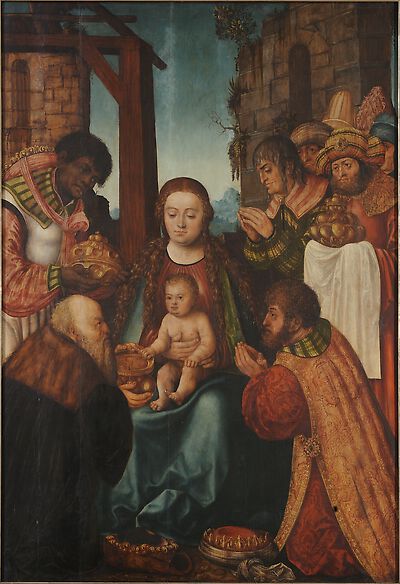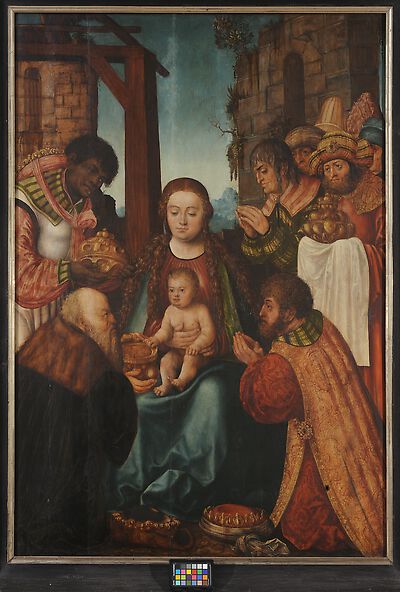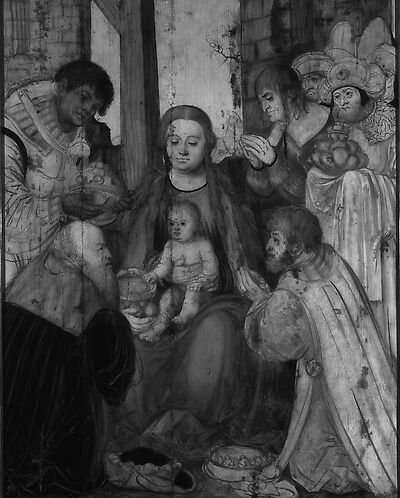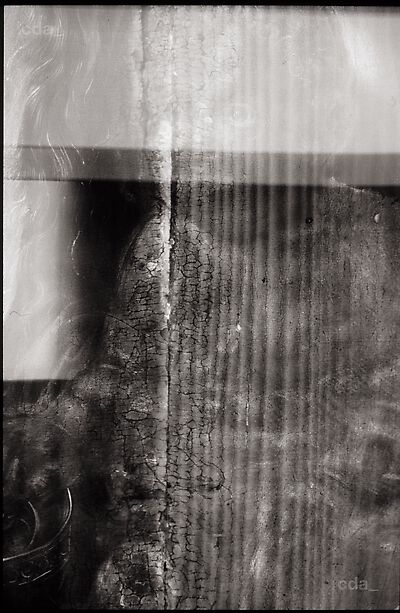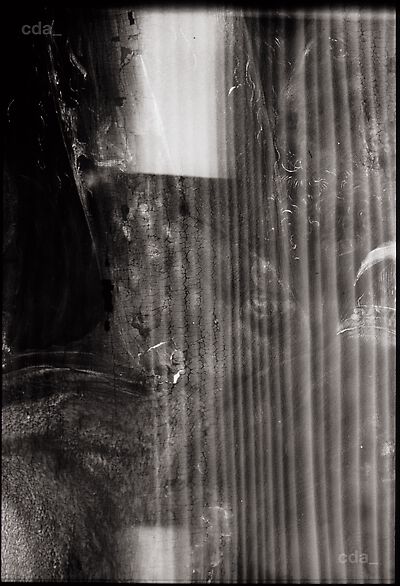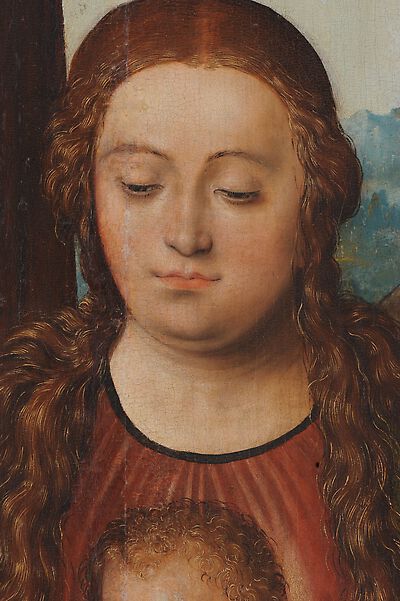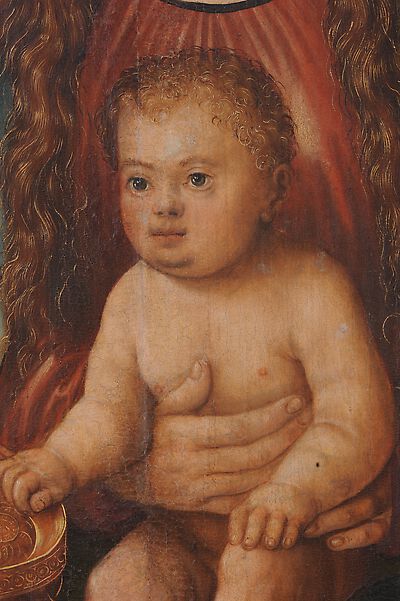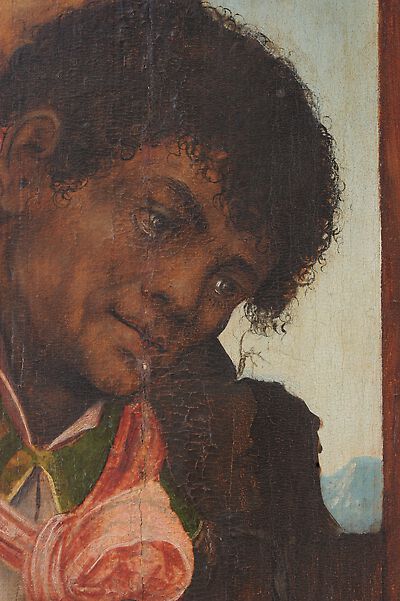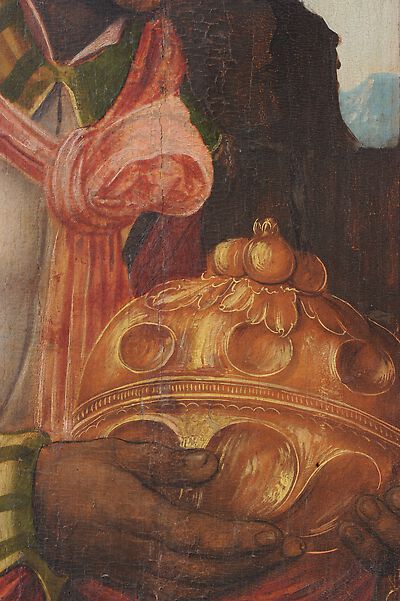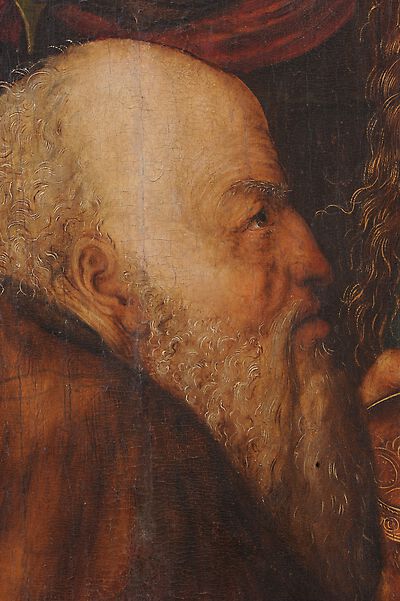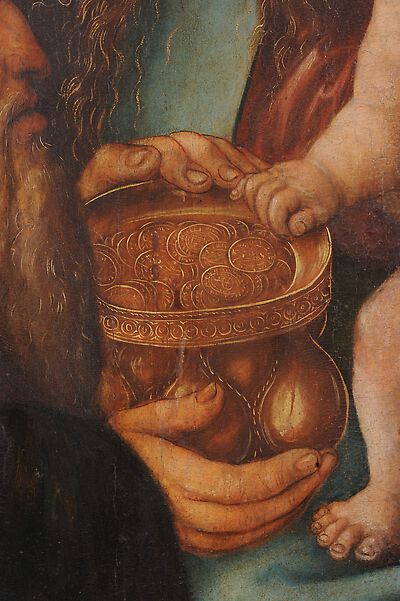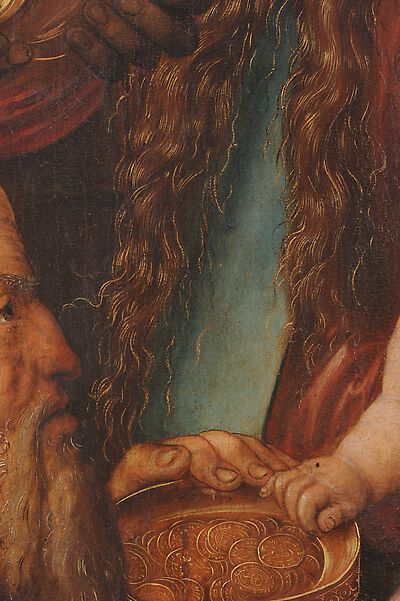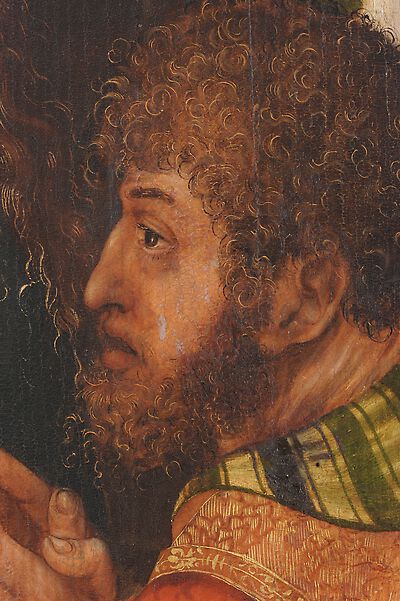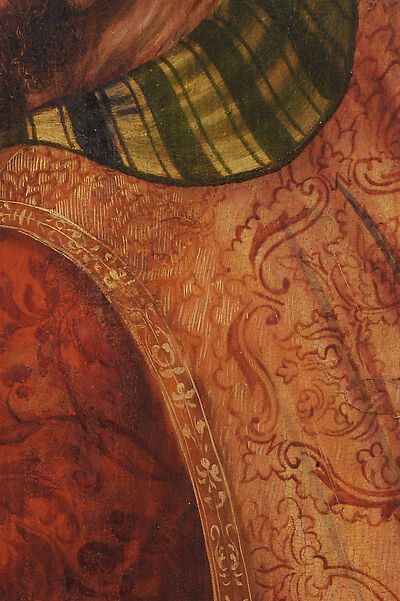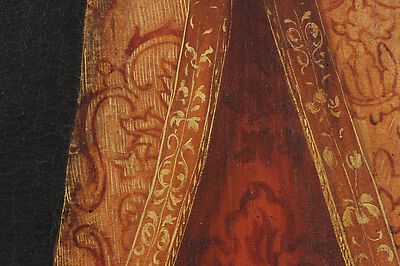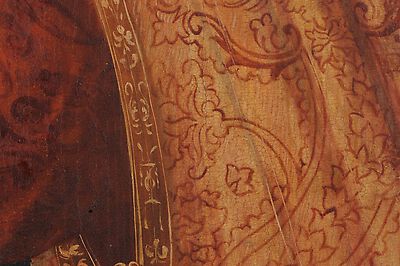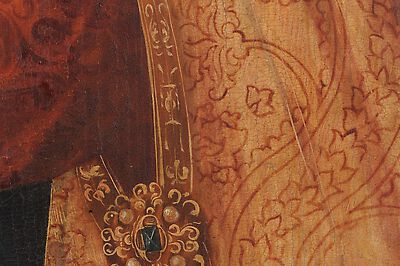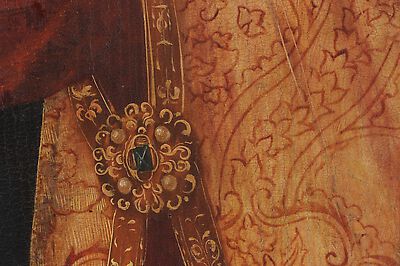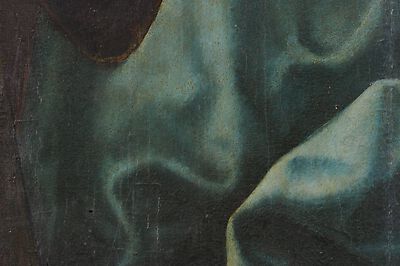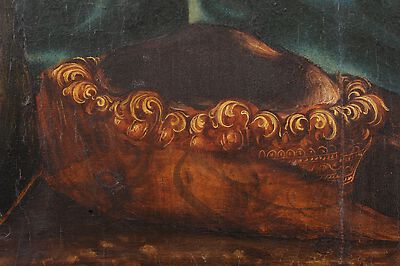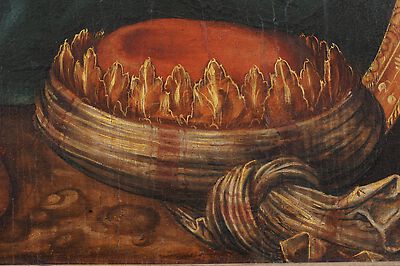The Virgin sits in the centre of the painting holding Christ on her knee. She looks down and her hair is loose. The three kings are arranged around her. The eldest has thinning hair and a beard, he knees in the foreground on the right and offers Christ a dish,
The Virgin sits in the centre of the painting holding Christ on her knee. She looks down and her hair is loose. The three kings are arranged around her. The eldest has thinning hair and a beard, he knees in the foreground on the right and offers Christ a dish, which the child tries to grasp. The second king kneels in the foreground on the left and is turned towards Christ in an attitude of prayer. His headdress lies next to him on the ground like the eldest king. The third and youngest king is depicted as a moor. He stands on the left side of the painting behind the eldest with his gaze fixed on Christ and offers his gift. A group of men stand in the middle distance on the right. The scene is framed on either side by a ruin.
- Attributions
-
Workshop Lucas Cranach the Elder
Hans Kemmer (in Cranach the Elder's workshop)
Attributions
| Workshop Lucas Cranach the Elder | ['Werkstatt Lucas Cranach d. Ä. (Hans Kemmer)', Heydenreich 2021 B, 67] [Exhib. Cat. Eisenach 1998, No. 23.6b] [Gronau 1972, Bd. 1, 44] |
| Hans Kemmer (in Cranach the Elder's workshop) | ['Werkstatt Lucas Cranach d. Ä. (Hans Kemmer)', Heydenreich 2021 B, 67] |
| Lucas Cranach der Ältere | [Sandner 1998 B, 128] [Friedländer, Rosenberg 1979, 79, No. 49] |
- Production dates
- about 1520 - 1525
about 1513 - 1514
Production dates
| about 1520 - 1525 | [Heydenreich 2007A, 73, 204] |
| about 1513 - 1514 | [Exhib. Cat. Eisenach 1998, No. 23.5b] [Friedländer, Rosenberg 1979, 79, No. 49] [Sandner 1998 B, 89][Exhib. Cat. Weimar/Wittenberg 1953, 30, No. 7] |
| after 1517 | [Gronau 1972, Bd. 1, 44] |
| about 1520 | [Schade 1974, 67, 386, note 491] |
- Dimensions
- Dimensions of support: 153.5 x 105.8 cm
Dimensions
Dimensions of support: 153.5 x 105.8 cm
[Exhib. Cat. Weimar, Wittenberg 1953, 30, no. 7]
- Signature / Dating
none
- Owner
- Ev.-Luth. Kirchgemeinde St. Wenzel, Naumburg
- Repository
- Stadtkirche St. Wenzel, Naumburg
- Location
- Naumburg
- CDA ID
- DE_StWN_NONE-001
- FR (1978) Nr.
- FR049
- Persistent Link
- https://lucascranach.org/en/DE_StWN_NONE-001/
